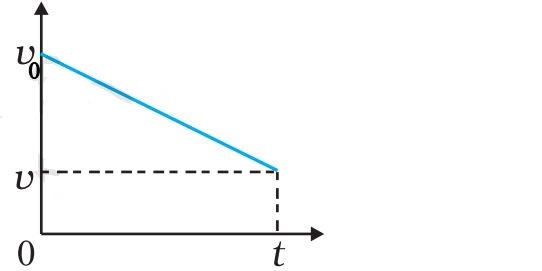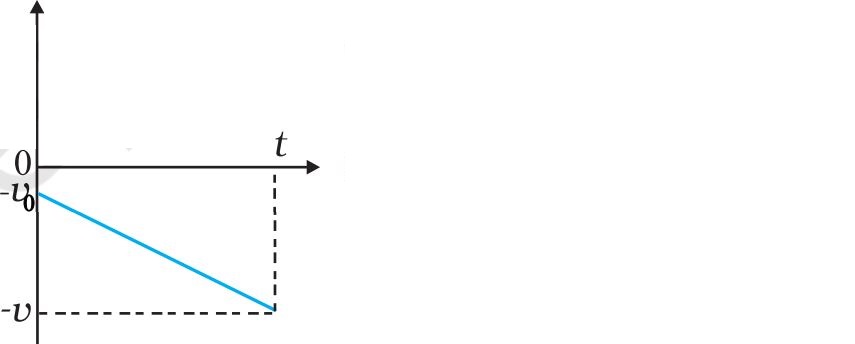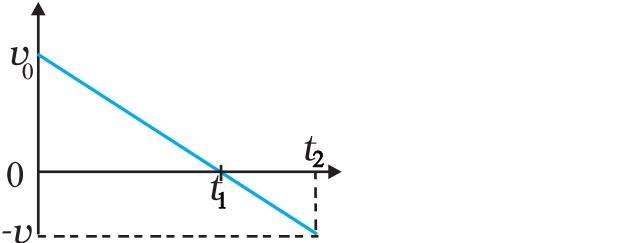Motion In A Straight Line Class 11 Revision Notes: The Motion In A Straight Line chapter in CBSE Class 11 deals with the basic concepts of motion in one dimension. It covers topics such as position, displacement, distance, speed, velocity, acceleration, uniform and non-uniform motion, free fall, projectile motion, and graphical representation of motion. With the help of short notes or revision notes provided below, you can quickly revise all these topics and make a quick assessment of your knowledge of the chapter. You can point out your weak areas and improve them with repeated practice. The revision notes for Motion In A Straight Line are put together by subject experts. Therefore, these notes are best to revise the chapter during exam preparations. You can download the notes in PDF as well.
Also Read:
CBSE Class 11 Physics Syllabus 2023-24
CBSE Class 11 Physics Deleted Syllabus 2023-24
Revision Notes for CBSE Class 11 Physics Chapter 2, Motion In A Straight Line
Motion: An object is said to be in motion if its position changes with time”.
Rectilinear motion: A particle moving along a straight-line is said to undergo rectilinear motion. For example, motion of a train on track, freely falling body under gravity etc.
Uniform Motion in a Straight Line
A body is said to be in a uniform motion if it travels in a straight line covering equal distances in equal intervals of time. Here, the rate of change of its velocity remains constant.
Non-uniform Motion in a Straight Line
A body is said to have a non-uniform motion if its velocity changes by unequal amounts in equal intervals of time. Here, the rate of change of its velocity changes at different points in time.
Instantaneous Velocity
Instantaneous velocity is defined as the limit of the average velocity as the time interval Δt becomes infinitesimally small.
Its dimensions are [M0L1T-1] and its S.I. unit is m/s.
Instantaneous Speed
Instantaneous speed, also known as just speed, refers to the magnitude of velocity.
Its dimensions are [M0L1T-1] and its S.I. unit is m/s.
Uniform Acceleration
If an object undergoes equal changes in velocity in equal time intervals it is called uniform acceleration.
Average Acceleration
It is the change in the velocity divided by the time-interval during which the change occurs.
Instantaneous Acceleration
It is defined as the limit of the average acceleration as the time-interval Δt goes to zero.
Its dimensions are [M0L1T-2] and its S.I. unit is m/s2.
Kinematical Graphs
- The ‘displacement-time’ and the ‘velocity-time’ graphs of a particle are often used to provide us with avisual representation of the motion of a particle.
- The slope of the displacement-time graph at any instant gives the speed of the particle at that instant.
- The slope of the velocity-time graph at any instant gives the magnitude of the acceleration of the particleat that instant.
- The area enclosed by the velocity-time graph, the time-axis and the two coordinates at time instants t1 to t2 gives the distance moved by the particle in the time-interval from t1 to t2.
Position-Time Graph
(a) for motion with positive acceleration
(b) for motion with negative acceleration
(c) for motion with zero acceleration
Velocity-Time Graph
(a) An object is moving in a positive direction with a positive acceleration.
(b) An object is moving in positive
(c) An object is moving in negative direction with a negative acceleration.
(d) An object is moving in positive direction till time t1, and then turns back with the same negative acceleration.
In a V-T graph, the area under the curve represents the displacement over a given time interval.
Kinematic Equations for Uniformly Accelerated Motion
For objects in uniformly accelerated rectilinear motion, the five quantities, displacement x, time taken t, initial velocity v0 , final velocity v and acceleration a are related by a set of simple equations called kinematic equations of motion:
(i) v = v0+ at
(ii) x = v0 t + 1/2 at2
(iii) v2 = v02 + 2ax
Also Read:
NCERT Book for Class 11 Physics (Revised Book)
NCERT Solutions for Class 11 Physics (All Chapters)









Comments
All Comments (0)
Join the conversation